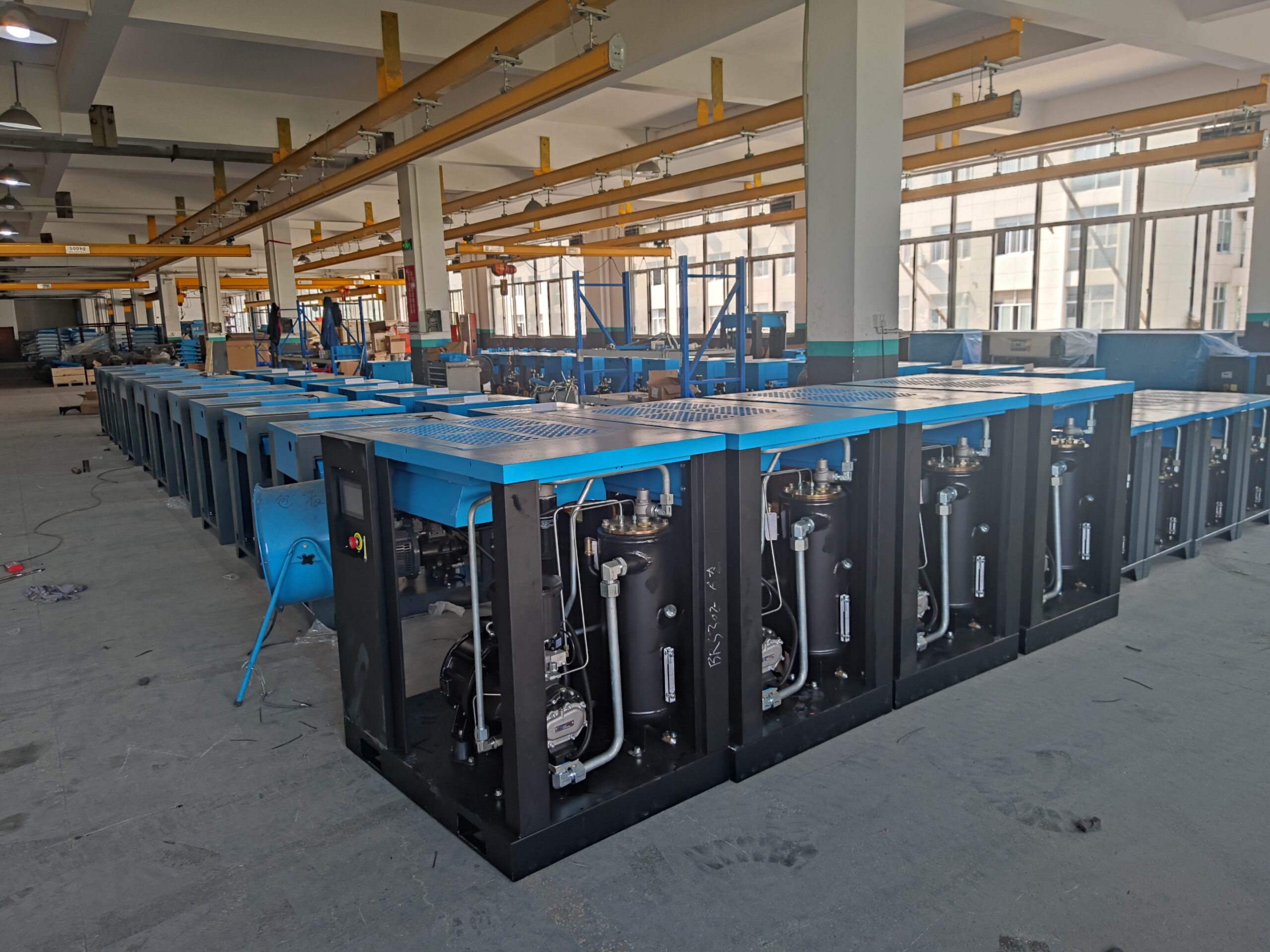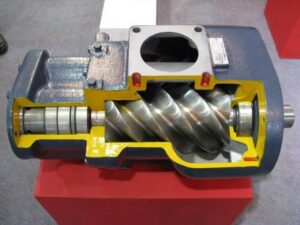The core steps for screw air compressor selection include clarifying air demand, selecting operation modes, configuring auxiliary equipment, and evaluating environmental factors and manufacturer services.
Here is a detailed selection guide:
I. Core Selection Factors
- Air Demand Analysis
- Displacement (Air Output):
Calculate based on the maximum, minimum, and average air consumption during production, reserving a 10%-20% margin. For example, consider the superposition effect of multiple devices running simultaneously and plan for future capacity expansion. - Pressure:
Match terminal equipment requirements and account for pipeline pressure loss (typically 0.01-0.03 MPa per 10 meters). Avoid “over-compression” or “under-compression.” Consider separate pressure supply pipelines for different needs (e.g., 5 bar and 8 bar lines).
- Variable-Speed vs. Fixed-Speed Selection
- Fixed-Speed (Industrial Frequency) Units:
Suitable for stable air demand with high load rates; lower upfront costs. - Variable-Speed (Frequency-Converted) Units:
Ideal for fluctuating air demand (e.g., requiring 60%-100% frequency adjustment), offering 15%-30% energy savings but higher initial costs. - Recommended Solution:
Multi-unit control systems (combining fixed-speed and variable-speed units) to enhance flexibility and energy efficiency.
- Energy Efficiency and Motor Configuration
Select motors compliant with national energy efficiency standards (e.g., IE3 or higher) to reduce long-term energy costs. - Auxiliary Configurations and Environmental Adaptation
- Lubrication Methods and Air Quality
- Oil-Lubricated:
Versatile but requires post-treatment equipment (e.g., refrigerated dryers, filters) to meet air purity standards. - Oil-Free:
Used in industries with strict air quality requirements (e.g., pharmaceuticals, food processing), but costlier.
- Air Storage Tanks and Refrigerated Dryers
- Tank capacity should align with air demand fluctuations (typically 0.3-5 m³).
- Dryer capacity must match compressor output (e.g., 1.2-13 m³/min).
- Installation Environment Requirements
- Ensure proper ventilation; avoid high temperatures, humidity, and dust.
- Protect against lubricant solidification in low-temperature environments.
- Maintain adequate spacing for heat dissipation and maintenance (e.g., ≥1 meter from walls, overhead clearance).
III. Manufacturer Selection and After-Sales Support
- Manufacturer Qualifications and Services:
Prioritize suppliers with production licenses and pressure vessel certifications.
Verify after-sales service network coverage (e.g., nationwide support).



